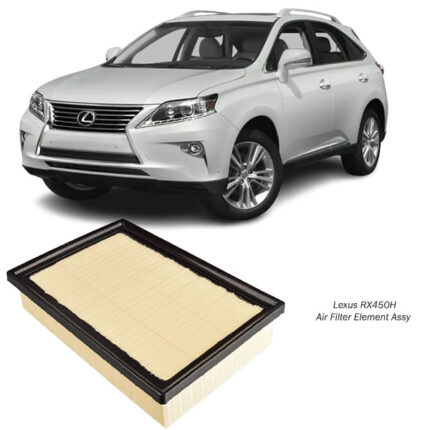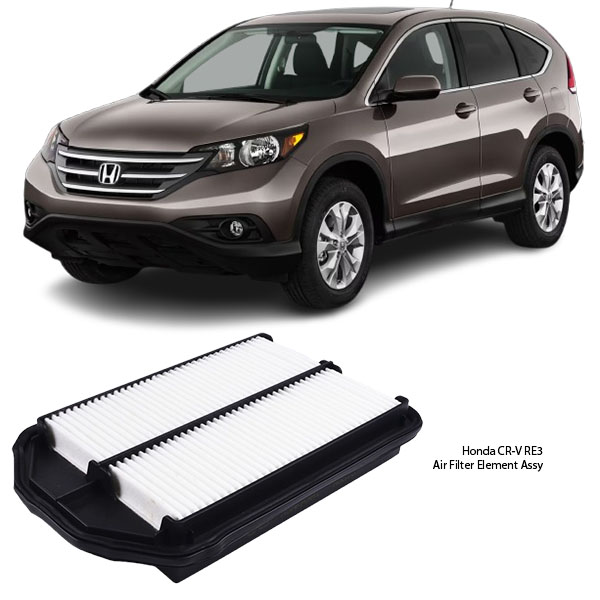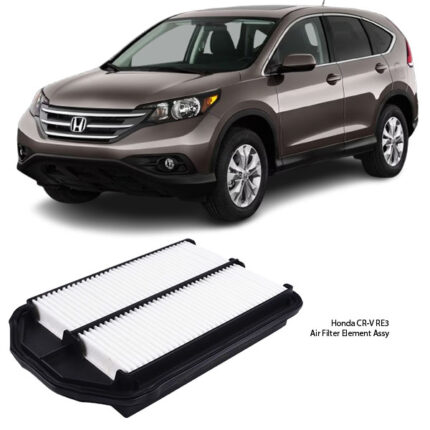Get Honda CR-V RE3 / RE4 Air Filter Element Assy A8510 in Kenya
The air filter element assembly is one of the most essential yet often overlooked components in a vehicle’s engine system. Though it may seem like a simple part, it plays a crucial role in maintaining engine health, improving fuel efficiency, and ensuring a smooth driving experience. In this comprehensive guide, we break down everything you need to know about the air filter element assembly.
What Is an Air Filter Element Assembly?
The air filter element assembly is a component housed within the air intake system of an internal combustion engine. Its primary function is to filter the air before it enters the engine. It captures harmful debris, dust, pollen, and other contaminants, ensuring that only clean air is mixed with fuel for combustion.
The term “assembly” typically refers to the complete housing and element combination. This includes:
-
The filter element (usually made of pleated paper, cotton, or foam)
-
The air filter housing or casing
-
Clamps or seals that ensure an airtight fit
Clean air is essential for efficient engine operation. Without an effective air filter, contaminants can enter the engine cylinders, causing wear and tear, reduced performance, and potential long-term damage.
How It Works
Air is drawn into the engine through the air intake. Before it reaches the combustion chamber, it passes through the air filter element. The porous filter media traps dirt particles while allowing air to flow freely. Once filtered, the clean air mixes with fuel in the combustion chamber, powering the engine.
Some modern vehicles also use sensors within the air intake system to measure airflow. If the air filter is clogged, these sensors can detect reduced airflow and trigger warning lights or reduce engine performance.
Types of Air Filter Elements
There are several types of air filter elements, and each comes with its own set of pros and cons:
-
Paper Air Filters
-
Most common type
-
Disposable and cost-effective
-
Designed for single-use and replaced at regular intervals
-
-
Foam Air Filters
-
Thicker and more durable
-
Often used in off-road or performance vehicles
-
Can be cleaned and reused depending on the design
-
-
Cotton Gauze Air Filters
-
High-performance filters, often reusable
-
Allow better airflow while still trapping contaminants
-
Require regular cleaning and oiling
-
-
Synthetic Air Filters
-
Durable and efficient
-
Often washable and reusable
-
Used in both OEM and aftermarket applications
-
Importance of a Clean Air Filter
-
Improved Engine Performance
A clean air filter allows the right amount of air to enter the engine, ensuring complete combustion and optimal performance. -
Better Fuel Efficiency
Dirty or clogged air filters can cause the engine to work harder, leading to increased fuel consumption. -
Reduced Emissions
Clean filters help maintain the right air-fuel mixture, reducing emissions and keeping your vehicle environmentally friendly. -
Extended Engine Life
Filtering out debris prevents premature engine wear, helping your engine last longer and perform better over time.
Signs Your Air Filter Needs Replacement
Even though it’s a relatively low-maintenance component, the air filter should be checked regularly. Here are some common symptoms of a clogged or failing air filter:
-
Reduced acceleration or engine power
-
Black smoke from the exhaust
-
Poor fuel economy
-
Rough idling or misfires
-
Check Engine Light illumination
-
Unusual engine sounds
If you drive in dusty or harsh environments, your air filter may need replacement more frequently.
Recommended Replacement Intervals
Most manufacturers recommend changing the air filter every 12,000 to 15,000 kilometers or once a year, whichever comes first. However, in areas with a lot of dust or pollution, it may need replacing more often. Always refer to your vehicle’s owner manual for specific intervals.
Air Filter vs Cabin Air Filter
It’s important not to confuse the engine air filter with the cabin air filter. While the engine air filter protects the engine, the cabin air filter purifies the air inside your vehicle’s interior, trapping allergens and dust.
How to Replace an Air Filter Element
Replacing the air filter is a simple task that most car owners can handle with basic tools:
-
Open the vehicle’s hood and locate the air filter housing—usually a black box with metal clips or screws.
-
Unfasten the housing and remove the old filter.
-
Check the filter for signs of excessive dirt, oil, or damage.
-
Insert the new filter with the same orientation.
-
Re-secure the housing and ensure a tight fit.
Always use a filter that is designed for your vehicle’s make and model.
OEM vs Aftermarket Air Filters
You can choose between OEM (Original Equipment Manufacturer) and aftermarket air filters. Here’s how they differ:
-
OEM Filters: Designed specifically for your vehicle. Ensure compatibility and reliability but can be more expensive.
-
Aftermarket Filters: Offer variety and may enhance performance or longevity. Be sure to choose a reputable brand to avoid fitment or quality issues.
Common Myths About Air Filters
-
“More expensive means better performance.”
Not always. High-performance filters can benefit some vehicles but aren’t necessary for regular daily driving. -
“You don’t need to replace it unless there’s a problem.”
Proactive maintenance is key. Waiting until problems arise can lead to costly repairs. -
“All filters are the same.”
Quality, materials, and design vary greatly. Cheap, low-quality filters may not trap fine particles or fit properly.
Conclusion
The air filter element assembly may be a small part of your car, but it plays a massive role in engine performance and longevity. Regularly checking and replacing your air filter helps keep your engine clean, efficient, and powerful. Whether you’re a daily commuter or a performance enthusiast, investing in a good-quality air filter—and replacing it when needed—is one of the simplest yet smartest maintenance habits you can adopt.
Follow us on Facebook for more parts.




